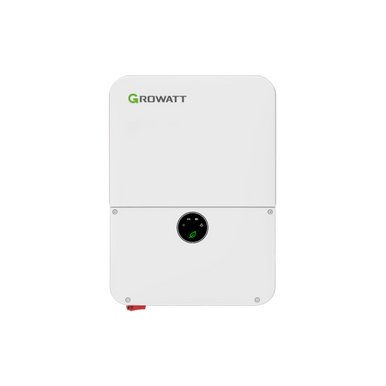duerrd561
New Member
Hi everyone! I'm hoping someone here might be able to help me answer a question that I'm really struggling to get a reliable answer on from SMA. But first, I will introduce my system and share details on the setup. Hopefully others might find this detail interesting.
I have a rural property in central California with PG&E NEMS service. At a high level, my setup consists of:
Both Sunny Boy inverters are configured in "grid-backup" mode, and everything behaves as I would expect across both inverters when the grid is up, the grid is down, the battery SoC is full without enough loads, or the battery SoC is low and the load shedding is in place. But the secondary array's inverter does not have an RS485 card and thus cannot communicate with the Sunny Island over the RS485 bus at all. Yet, both solar inverters are clearly "communicating" with the Sunny Island's phase shifting when it needs them to derate their output due to being off-grid with full battery SoC and not enough loads. I know this because I see some older Insteon light switches flickering when the phase shifting occurs, and also because I have checked the frequency and inverter output during such times as these and can see the phase shifted. And I believe this functionality is coming from the fact that both inverters implement UL 1741, not from any RS485 capability which only one of the inverters even has.
So, what functionality am I gaining by having the older Sunny Boy 8000-US and the Sunny Island connected via RS485, beyond the ability to monitor and/or configure them via the WebBox?
The reason for my question is that the older Sunny Boy 8000-US inverter is beginning to fail (intermittently going into "Disturbance" mode) and I need to replace it. Luckily my SunPower modules were one of the first to not require positive grounding, so I can at least entertain a newer transformer-less inverter. If I can't get an SMA inverter that is capable of talking RS485 with the Sunny Island then I'll be forced to buy a Data Manager M which is quite expensive, and overkill for my needs. So I am trying to understand what functionality I would lose if the Sunny Island no longer had RS485 communication with either solar inverter.
Thanks in advance for your help!
-- edited to correct reversed AC1/AC2 labels
I have a rural property in central California with PG&E NEMS service. At a high level, my setup consists of:
- A pair of Sunny Island 6048-US inverters on a 490Ah battery bank.
- A primary 9.8kW SunPower solar array with an older (SunPower-branded) Sunny Boy 8000-US.
- A secondary 4.5kW solar array with a newer Sunny Boy 5.0-US.
- An automatic transfer switch (ATS) wired between the main service entrance panel and the main load center (tandem panel).
- An RS485 connection between a WebBox, the older Sunny Boy 8000-US, and the master Sunny Island.
Both Sunny Boy inverters are configured in "grid-backup" mode, and everything behaves as I would expect across both inverters when the grid is up, the grid is down, the battery SoC is full without enough loads, or the battery SoC is low and the load shedding is in place. But the secondary array's inverter does not have an RS485 card and thus cannot communicate with the Sunny Island over the RS485 bus at all. Yet, both solar inverters are clearly "communicating" with the Sunny Island's phase shifting when it needs them to derate their output due to being off-grid with full battery SoC and not enough loads. I know this because I see some older Insteon light switches flickering when the phase shifting occurs, and also because I have checked the frequency and inverter output during such times as these and can see the phase shifted. And I believe this functionality is coming from the fact that both inverters implement UL 1741, not from any RS485 capability which only one of the inverters even has.
So, what functionality am I gaining by having the older Sunny Boy 8000-US and the Sunny Island connected via RS485, beyond the ability to monitor and/or configure them via the WebBox?
The reason for my question is that the older Sunny Boy 8000-US inverter is beginning to fail (intermittently going into "Disturbance" mode) and I need to replace it. Luckily my SunPower modules were one of the first to not require positive grounding, so I can at least entertain a newer transformer-less inverter. If I can't get an SMA inverter that is capable of talking RS485 with the Sunny Island then I'll be forced to buy a Data Manager M which is quite expensive, and overkill for my needs. So I am trying to understand what functionality I would lose if the Sunny Island no longer had RS485 communication with either solar inverter.
Thanks in advance for your help!
-- edited to correct reversed AC1/AC2 labels
Last edited:






